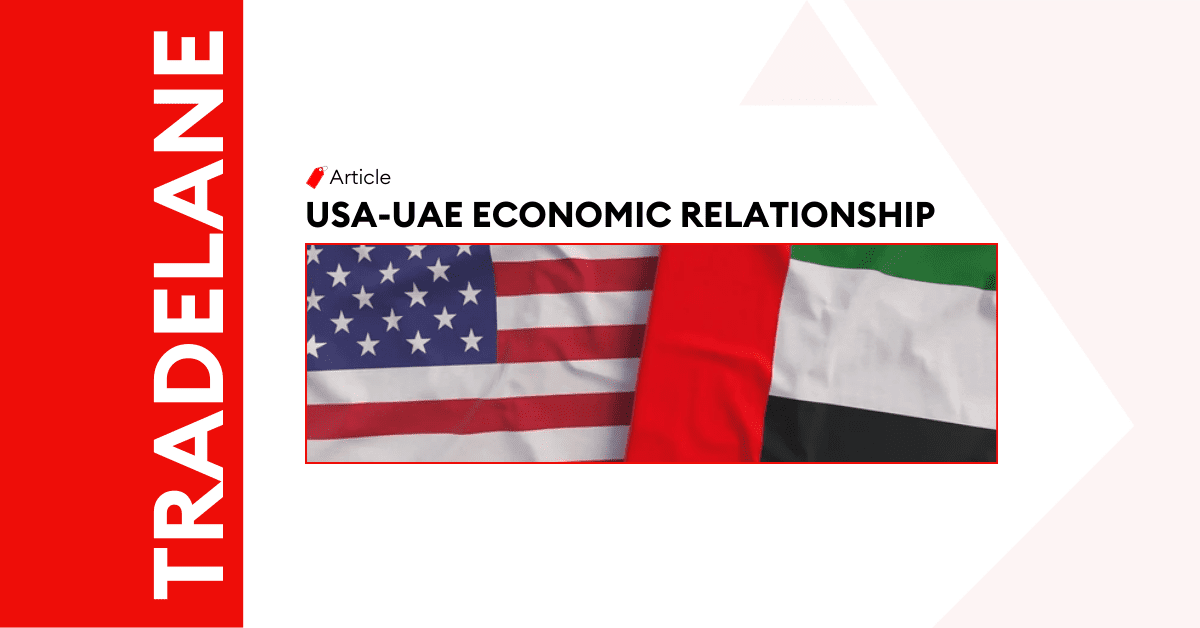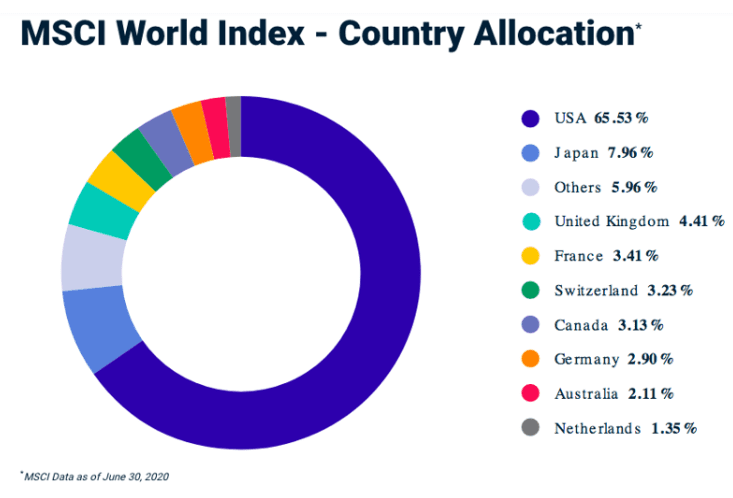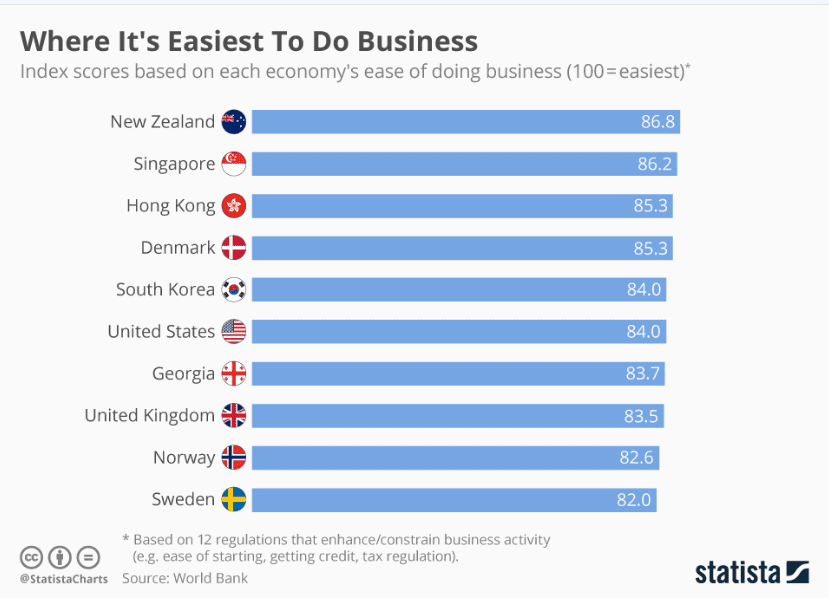
Comprehensive Guide on USA-UAE Economic Relationship
Introduction

The United Arab Emirates (UAE) has been a central player in the realm of international trade agreements, and its trade relations with the United States have witnessed both progress and pauses. In 2005, negotiations for a Free Trade Agreement (FTA) between the UAE and the U.S. began, but they were temporarily halted in 2007 due to time constraints associated with trade promotion authority. Nevertheless, both nations remained committed to revisiting FTA talks in the future. Simultaneously, the UAE, as a member of the Gulf Cooperation Council (GCC), has actively participated in various trade agreements, including the U.S.-GCC Framework Agreement for Trade, Economic, Investment, and Technical Cooperation, ratified in 2014. Furthermore, it has leveraged its GCC membership to forge strong economic ties with neighboring nations and enjoy the benefits of the Greater Arab Free Trade Area Agreement (GAFTA).
The following blog delves into this intricate trade landscape, where the UAE’s position as an economic powerhouse in the Middle East intersects with its trade relations with the United States and the broader global marketplace.
Trade Relations Between USA and United Arab Emirates (UAE)
The trade volume between the two nations has increased drastically over the past few years and is expected to be this way in the coming years too. This growth reflects the diverse economy of the UAE and its leading role as a modern influence on the Arab world. The United Arab Emirates is the second largest export market in the Middle East for US, with exports exceeding USD 17 billion in 2021. Furthermore, there are more than 1500 US companies present in the UAE; including Bechtel, Starbucks, and more.
Leading US Exports to UAE
In 2021, the main US exports to the UAE were Cars (USD 1.85 Billion), Broadcasting Equipment (USD 1.74 Billion), and Computers (USD 925 Million). In the last 26 years, the US exports to UAE have increased at an annual rate of 8.16%.
Leading UAE Exports to US
The main exported products in 2021 of UAE to US included Raw Aluminum (USD 1.33 Billion), Refined Petroleum (USD 855 Million), and Crude Petroleum (USD 415 Million). The exports of UAE to the US have increased at an annual rate of 10.9% in the past 26 years.
Leading Exporting States with the UAE
The details of top 10 leading exporting states to the UAE include:
State | Top Exports | Total Exports (2018-2021) |
Texas | Computers & Electronics, Motor Vehicle, Body Trailer & Parts, and Machinery | USD 12.4 Billion |
New York | Metals, Computers & Electronics, and Miscellaneous Products | USD 7.17 Billion |
California | Crops & Animals, Computers & Electronics, Scraps, Secondhand, and Special Classification | USD 6.25 Billion |
Washington | Transportation Equipment, Computers & Electronics, and Crops & Animals | USD 4.37 Billion |
South Carolina | Motor Vehicle, Body Trailer & Parts, Chemicals, Plastics & Rubber | USD 4.25 Billion |
Florida | Computers & Electronics, Transportation Equipment, and Chemicals | USD 3.92 Billion |
New Jersey | Computers & Electronics, Scraps, Secondhand, and Special Classification, and Chemicals | USD 3.5 Billion |
Georgia | Scraps, Secondhand, Special Classification, Transportation Equipment, and Motor Vehicle, Body Trailer & Parts | USD 3.3 Billion |
Ohio | Transportation Equipment, Motor Vehicle, Body Trailer & Parts, and Chemicals | USD 2.31 Billion |
Michigan | Motor Vehicle, Body Trailer & Parts, Computers & Electronics, and Chemicals | USD 2.14 Billion |
UAE's Trade Relations and Agreements
In 2005, the United States initiated Free Trade Agreement (FTA) negotiations with the UAE, but these talks were halted in early 2007 due to time constraints related to trade promotion authority. Both countries expressed their commitment to revisit FTA negotiations in the future, but no further discussions have occurred.
In 2012, the UAE, as a member of the Gulf Cooperation Council (GCC), became a party to the U.S.-GCC Framework Agreement for Trade, Economic, Investment, and Technical Cooperation. This agreement was ratified by the UAE in 2014, and since then, the United States and the UAE have engaged in multiple rounds of the U.S.–UAE Economic Policy Dialogue to collaborate on economic matters and resolve bilateral trade issues.
The UAE is actively involved in various multilateral and bilateral trade agreements, particularly within the GCC. This membership gives the UAE a shared market and customs union with countries like Saudi Arabia, Kuwait, Bahrain, and Oman. Additionally, under the Greater Arab Free Trade Area Agreement (GAFTA), the UAE enjoys free trade access to a wide range of countries in the Middle East and North Africa, including Saudi Arabia, Kuwait, Bahrain, Qatar, Oman, and many others.
Trade and Investment Activities
Some of the previous high value trade and investment activities by UAE include,
- The USD 27.6 billion direct investment in 2019 by the UAE that supported 12,000 American jobs.
- GlobalFoundries, which is a joint venture between AMD and Advanced Technology Investment Company (ATIC) of Abu Dhabi, opened its headquarters in the US in 2019. This included an investment of USD 4.2 billion in semiconductor fabrication plant in upstate New York. Furthermore, in 2014, ATIC announced an additional USD 10 billion investment to further expand the facility.
- In 2014, UAE based Gulftainer signed a 35-year agreement that will operate container and cargo terminal at Port Canaveral on the east coast of Florida.
- On 2016, a US startup incubator 1776 opened their office in Dubai, which was its first international location.
- An Emirate’s company Taqa Global has invested for 205.5-megawatt Lakefield wind project for creating sustainable energy.
UAE-US Business Council
To explore more ways to improve on the already existing robust trade relations, both nations established the US-UAE Business Council in 2007. This helped in the expansion of the commercial relationship with business-to-business initiatives.
Why Invest in the USA Market?
The businesses investing in the USA market gains competitive advantage due to several reasons including,
World’s Largest Market

The USA is considered to be the largest consumer market with a GDP exceeding USD 20 trillion. Besides being one of the largest global markets, it is also a platform for some of the world’s largest corporations, such as Amazon, Apple, etc.
Innovations’ Nexus
The USA is recognized as a leading hub for Research and Development (R&D), registering more international patents in the year in comparison to other countries across the globe. Also, the country has a robust intellectual property protection framework to create a safe environment.
Ease of Doing Business

In the 2020 Ease of Doing Business Index, the US was ranked at number 6 out of 190 economies. This ranking is backed by a strong regulatory environment conducive to starting and operating a business.
Abundant Resouces
As the third largest country in the world by geography, the United States is home to vast landscape and abundant resources, including petroleum and natural gas. The diverse regions of the country are connected by an expansive infrastructure network that helps companies to produce and move their products efficiently.
Access to Capital
The United States is a host to developed and liquid financial markets in the world. They have several funding sources – ranging from banks, investment firms, to venture capitalists to encourage innovation and expansion for business in the States.
If you are looking for an opportunity to start trading on this trade lane, then air and ocean transportation modes are the option. The following sections contain the details of major seaports and airports, along with common shipping routes available for sending the shipments.
Major Ports for Ocean Cargo
Using ocean port to send cargo is an ideal choice for businesses/individuals that are looking for cost-effective shipping solutions from UAE to USA. If you are planning to ship larger quantities, Full Container Load (FCL) is an appropriate choice; however, if you don’t need a dedicated container, Less than Container Load (LCL) is a viable option.
Here’s a list of major ports in both countries:
Cargo Ports in the UAE
The following ports hold significance in sending cargo to the United States:
Khor Fakkan in Sharjah
The port is located on the Indian Ocean coast of the UAE with a storage space of 450,000 square meters. The annual container volume at this port is around 3 million TEUs. This ocean port is an ideal choice if you are looking to move goods from east coast locations.
Jebel Ali in Dubai
This is the biggest port in the UAE, located 35km southwest of Dubai. It is considered to be a premier gateway for more than 90 shipping services that connects over 140 ports. There is an annual container volume of more than 19.3 million TEUs at this port.
Khalifa Port in Abu Dhabi
The port is located midway between Dubai and Abu Dhabi; it is also the first semi-automated port in the region. Furthermore, there is annual container of more than 14.5 million TEUs.
Cargo Ports in the USA
The following ports hold significance in shipping between UAE and USA:
Port of Charleston in South Carolina
This port is the 8th busiest port in the US in terms of cargo handling with an annual container volume of more than 2.4 million TEUs. Furthermore, the port is capable of moving 37 cranes per hour, which makes it one of the most productive ports in the United States.
Port Norfolk in Virginia
This port is situated on the Elizabeth River; with direct rail access to Norfolk’s Southern Heartland Corridor, serving Midwest markets. The annual container volume on this port is around 2.9 million TEUs.
Port Houston in Texas
With annual container volume of more than 2.9 million TEUs, this port is the largest one in the Gulf of Mexico that specializes in handling containerized cargo. The container volume at this port has increased by more than 11% in 2019.
Port Boston in Massachusetts
It is a 200-hectare harbor with an annual container volume of more than 270,000 TEUs. This is also the largest port in Massachusetts with access to the interstates 90, 93, and 95 for easy onward transit of goods from the UAE.
Port Everglades in Florida
With an annual container volume of more than 1 million TEUs, it is the 12th busiest port in the US. The port is located close to Fort Lauderdale Airport and is the first and largest foreign trade zone in Florida. Furthermore, the port is situated only 2km from the Atlantic shipping lane.
Major Airports for Air Cargo
Sending cargo through air transportation is an ideal option for perishable items, and also for shipments that take less than three pallets space. This transportation mode is also a good choice to get better cargo protection.
Cargo Airports in the UAE
The following are some of the major airports that can be used to send cargo to the US:
Dubai Al Makhtoum in Dubai
The airport is located 37km southwest of Dubai on a total area of 280 square kilometers. It is primarily a freight handling facility with some passenger services as well. This airport serves the following US airports:
- Chicago O’Hare
- Houston International
- New York JFK
Dubai International Airport in Dubai
The airport is situated only 4km from Dubai on a 2900-hectare site. It offers easy access to the airport from suppliers and manufacturers based in Dubai, Deira, Al Khawameej, and the industrial areas in the northwest of the facility.
Furthermore, it serves multiple US airports including, Los Angeles, Boston, Dallas, Seatle, New York JFK, Washington D.C, San Francisco, Chicago, Orlando, and Houston.
Abu Dhabi International Airport in Abu Dhabi
This airport is the second largest air freight facility in the UAE that handles more than million tonnes of cargo on an annual basis. Furthermore, it serves the following US airports:
- Chicago O’Hare
- Los Angeles
- New York JFK
- Washington D.C
Sharjah International Airport in Sharjah
The airport is located 13km southeast of Sharjah, featuring 5 dedicated cargo terminals. Their facilities are known for handling and storing livestock and temperature-sensitive goods. The Sharjah International Airport serves only one US airport, i.e., Cincinnati.
Cargo Airports in the US
The list of airports that holds significance for trade with UAE include:
Cincinnati International Airport
The airport is situated in the state of Kentucky; rated as the fastest growing air cargo hub in Northern America in the last few years. A major Amazon hub is under construction as well in the airport, which increases its importance in the shipping world.
Furthermore, the only UAE airport connected from this one is the Sharjah international Airport.
Los Angeles Airport in South California
The airport is located 30km southwest of downtown LA and serves as the main airport for the 11th largest economy of South California. This airport is connected to several UAE airports including,
- Dubai Al Makhtoum Airport
- Abu Dhabi International Airport
- Dubai International Airport
Sacramento International Airport
The airport is located 16km northwest of downtown Sacramento, acting as a gateway to the capital of the state of California. It is also famous for its sustainability initiatives, as they generate 30% of the airport’s energy using solar power. There are no UAE airports connected with this one and the cargo can only be sent using indirect services to the UAE.
O’Hare Airport in Chicago
This is the third largest air cargo facility in the US. There is space available on aprons for 40 jumbo freighters, and around 2 million tonnes of freight were processed in 2019. The following UAE airports are connected to this one:
- Dubai Al Makhtoum Airport
- Dubai International Airport
- Abu Dhabi International Airport
JFK International Airport in New York
The airport handles the biggest volume of cargo coming from the US. Most of the cargo facilities in the airport are located in the north and west of the main terminal. The UAE airports that JFK is connected with include Dubai Al Makhtoum Airport, Dubai International Airport, and Abu Dhabi International Airport.
Shipping Routes Between USA and UAE

Shipping cargo from door to door in UAE to US can take 38 days on average depending on the chosen transportation route, goods being shipped, and the method of transportation.
Cargo Type | Port to Port | Door to Door |
Sea FCL | 37-59 Days | 47-69 Days |
Sea LCL | 52-56 Days | 62-66 Days |
Air Cargo | 16-18 Days | 2-7 Days |
Here’s further details on the available routes:
Transportation Routes by Sea
Route | Cargo Type | Estimated Transit Time |
Abu Dhabi to Boston | LCL | 44 Days |
Abu Dhabi to Charleston | LCL | 38 Days |
Jebel Ali to Houston | FCL | 39 Days |
Jebel Ali to Houston | LCL | 49 Days |
Jebel Ali to Long Beach | FCL | 48 Days |
Jebel Ali to Miami | FCL | 38 Days |
Jebel Ali to New York | FCL | 43 Days |
Jebel Ali to Norfolk | FCL | 41 Days |
Jebel Ali to Seatle | LCL | 59 Days |
Jebel Ali to Chicago | LCL | 44 Days |
Jebel Ali to Los Angeles | FCL | 45 Days |
Jebel Ali to Newark | FCL | 30 Days |
Transportation Routes by Air
Route | Estimated Transit Time |
Dubai to Atlanta | 4 Days |
Dubai to Seatle | 4 Days |
Dubai to San Francisco | 4 Days |
Dubai to Miami | 4 Days |
Dubai to Los Angeles | 4 Days |
Dubai to Detroit | 4 Days |
Dubai to Cincinnati | 4 Days |
Dubai to Boston | 6 Days |
Dubai to Dallas | 6 Days |
Dubai to Chicago | 3 Days |
Dubai to New York | 3 Days |
Dubai to Houston | 8 Days |
Dubai to Washington D.C | 4-6 Days |
Dubai to Philadelphia | 4-6 Days |
Dubai to Orlando | 4-6 Days |
Dubai to Phoenix | 3-5 Days |
Required Documents for Shipping from UAE to USA
When shipping to the US, it is important to prepare all the necessary documents to comply with customs regulations and ensure the shipment arrives at the destination on time. Here are some of the required documents:
Commercial Invoice
This document includes all the details about the goods being shipped, such as quantity, description, and the value.
Bill of Lading
It is a contract between a shipper and the carrier, describing the terms and conditions of the shipment.
Packing List
This document provides the details of the shipment’s content, including the dimensions, weight, and quantity of every item.
Certificate of Origin
The document verifies the country of origin of the goods being shipped.
Import and Export License
The import and export license may be required depending on the shipment’s nature.
Conclusion
The economic relationship between the United States and the United Arab Emirates (UAE) is robust and dynamic. Trade between the two nations has grown significantly, with the UAE being the second-largest export market for the U.S. in the Middle East. Furthermore, the U.S. market offers multiple attraction to the UAE investors including large consumer base, innovation hub, ease of doing business, abundant resources, and access to capital.
In summary, the USA-UAE economic relationship offers a wealth of trade and investment opportunities, underlining the potential for mutual growth and prosperity.
Related Articles
Exploring the Booming UAE-Indonesia Economic Relations
The economic relations between the United Arab Emirates (UAE) and Indonesia have been flourishing in
Comprehensive Guide on USA-UAE Economic Relationship
Introduction The United Arab Emirates (UAE) has been a central player in the realm of international
The UAE and Saudi Arabia – Economic Powerhouses on the Rise
The bilateral trade relationship between the United Arab Emirates (UAE) and Saudi Arabia is characte






Post a comment
You must be logged in to post a comment.